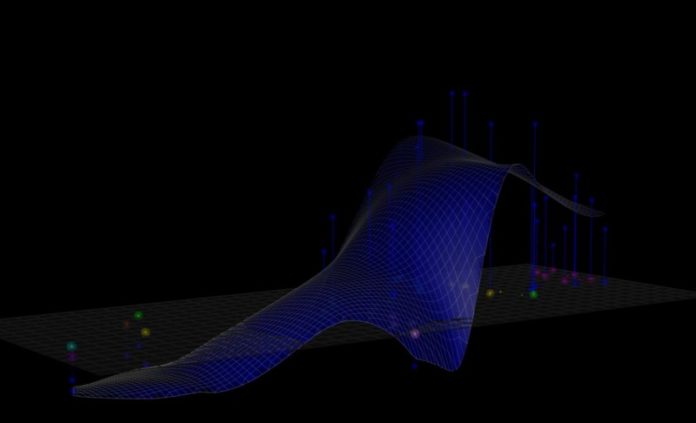
An international team of researchers has shown that it may be possible to improve the effectiveness of the seasonal flu vaccine by ‘pre-empting’ the evolution of the influenza virus.
In a study published today in the journal Science, the researchers, led by the University of Cambridge, describe how an immunological phenomenon they refer to as a ‘back boost’ suggests that it may be better to pre-emptively vaccinate against likely future strains than to use a strain already circulating in the human population.
Influenza is a notoriously difficult virus against which to vaccinate. There are many different strains circulating — both in human and animal populations — and these strains themselves evolve rapidly. Yet manufacturers, who need to produce around 350 million doses ahead of the annual ‘flu season’, must know which strain to put in the vaccine months in advance — during which time the circulating viruses can evolve again.
Scientists at the World Health Organisation (WHO) meet each February to select which strain to use in vaccine development. Due to the complexity of human immune responses, this is decided largely through analysis of immune responses in ferrets to infer which strain best matches those currently circulating. However, vaccination campaigns for the following winter flu season usually start in October, by which time the virus may have evolved such that the effectiveness of the vaccine match is reduced.
“It’s a real challenge: the WHO selects a strain of flu using the best information available but is faced with the possibility that the virus will evolve before the flu season,” explains Dr Judy Fonville, one of the primary authors on the paper and a member of WHO Collaborating Centre for Modelling, Evolution and Control of Emerging Infectious Diseases at the University of Cambridge. “Even if it does, though, it’s worth remembering that the flu vaccine still offers much greater protection than having no jab. We’re looking for ways to make an important vaccine even more effective.”
According to the WHO, seasonal influenza causes between 3 and 5 million cases of severe illness each year worldwide, up to 500,000 deaths, as well as significant economic impact. Vaccination policies vary per country, but are typically recommended for those at risk of serious complications, such as pregnant women and the elderly. The seasonal flu vaccine has been described as one of the most cost-effective measures of disease prevention, and vaccination therefore has a large health economic benefit. Currently 350 million people partake in annual vaccination programmes. Yet there is room for improvement.
After gathering an extensive amount of immunological data, the team modelled the antibody response to vaccination and infection using a newly developed computer-based method to create an individual’s ‘antibody landscape’. This landscape visualises an individual’s distinct immune profile like a three dimensional landscape with mountains in areas of immune memory and valleys in unprotected areas. The technique enables a much greater understanding of how our immune system responds to pathogens such as flu that evolve and re-infect us.
A key finding from the work is that upon infection, a response is seen not just to the infecting influenza strain, but to all the strains that individual has encountered in the past. It is this broad recall of immunity, that they term the ‘back-boost’, that is the basis for the proposed vaccine improvement.
Dr Sam Wilks, one of the primary authors, explains: “Crucially, when the vaccine strain is updated pre-emptively, we see that it still stimulates better protection against future viruses yet this comes at no cost to the protection generated against currently circulating ones.
“Faced with uncertainty about how and when the flu virus might evolve, it’s better to gamble than to be conservative: if you update early, you still stimulate protection against current strains — much worse is if you update too late. Rather than trying to play ‘catch-up’, it’s better to anticipate and prepare for the likely next step of influenza evolution — and there is no penalty for doing it too soon.”
Professor Derek Smith, also from Cambridge, adds why this may lead to improved vaccines in a relatively short timeframe: “The beauty of this approach is that it would not require any change to the current manufacturing process. From the point that the new strain has been selected through to an individual receiving their shot, the steps will be exactly the same. The only difference would be greater protection for the recipient.”
The team is now combining this research with their other work on predicting the way in which the virus will evolve, and plan to combine these two major pieces of work in prospective clinical trials.
Story Source:
The above story is based on materials provided by University of Cambridge. The original story is licensed under a Creative Commons Licence. Note: Materials may be edited for content and length.
Journal Reference:
- J. M. Fonville, S. H. Wilks, S. L. James, A. Fox, M. Ventresca, M. Aban, L. Xue, T. C. Jones, Le N. M. H., Pham Q. T., Tran N. D., Y. Wong, A. Mosterin, L. C. Katzelnick, D. Labonte, Le T. T., G. van der Net, E. Skepner, C. A. Russell, T. D. Kaplan, G. F. Rimmelzwaan, N. Masurel, J. C. de Jong, A. Palache, W. E. P. Beyer, Le Q. M., Nguyen T. H., H. F. L. Wertheim, A. C. Hurt, A. D. M. E. Osterhaus, I. G. Barr, R. A. M. Fouchier, P. W. Horby, D. J. Smith. Antibody landscapes after influenza virus infection or vaccination. Science, 2014; 346 (6212): 996 DOI: 10.1126/science.1256427
